Photon Counting Systems

Developed low-level photon detection systems using Hamamatsu R595 electron multiplier and Spiraltron electron multiplier SEM 4219. Designed and built a thermoelectric cooler system for cooling the Hamamatsu R595 electron multiplier for low-noise operation. An op-amp feedback circuit held the operating temperature at -5C. The photon counting circuit used a Plessey SL1030C wideband amplifier, digital logic, and a line driver circuit for interfacing with a microcomputer digital input. The radiation intensity was proportional to the gated pulses from the photon counter circuit.
Flame Detection
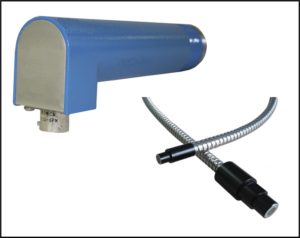
Developed a flame detection system for gas turbine systems which utilized an extended-range PbS sensor (New England Photoconductor). A high temperature Fiberguide fiber-optic bundle and focusing lens assembly integrated into the gas turbine combustion section. The remotely mounted optical sensor included a high-gain op-amp circuit and transmitted the signal to an analog high-speed signal processor. The high-speed signal processor had a selectable bandpass filter to respond at the peak flicker frequency which allowed precise response to the internal combustion. This provided accurate signal discrimination between combustion and background heat radiation allowing fast cutoff of fuel supply on flameout.
Machine Vision
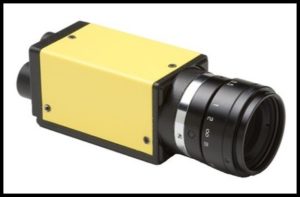
Certified by Allen-Bradley – Rockwell Automation as a machine vision integrator. Incorporated and programmed Allen-Bradley and DVT/Cognex machine vision systems for parts inspection, process control, and robot guidance in automation equipment. Vision systems interfaced to programmable logic controllers (SLC-5, PLC-5 – Allen-Bradley – Rockwell Automation). Designed lighting systems and supplementary lens assemblies to improve reliability of image processing during high-speed inspection or vision operations.
Optical Pumping System
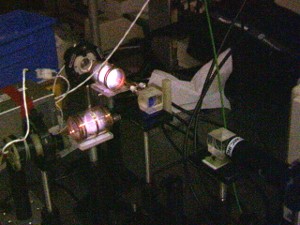
The main components of this system included a 1 Torr He4 gas cell, 27 MHz RF exciter, InGaAs distributed Bragg reflecting diode laser, laser controller, circular polarizing beamsplitter cube, and InGaAs photodiode with amplifier. The RF source excited the He atoms from their ground state to a metastable state. The laser radiation passed through a circular polarizer and through the cell to the photodiode. The laser controller regulated the laser temperature and laser current to lock the wavelength to the Helium D0 absorption line at 1083 nm. Fine control of the laser current was based on an error signal developed by the helium cell in response to laser current modulation at 9.5 KHz. The circularly polarized pumping light produced an orientation in the metastable helium with a net magnetic moment. The emergent radiation was detected by the photodiode and the output signal was a measure of the absorption in the cell.
High-Speed 3D Camera System

Designed a unilateral 3D high-speed video system consisting of three Fastec Imaging (Mikrotron GmbH) HiSpec 2G cameras which operated at up to 1280 x 1024 pixels and up to 112,000 frames per second (fps). Navitar high-speed fixed focal length lenses with f-stop of 0.95 were used with the cameras and the lighting consisted of six 200W Lowell Pro-Lights with variable focus. The high-performance lens and lighting system design allowed a fast shutter speed of 0.1 ms at a frame rate of 1000 fps to be used. With this setup, the maximum blur was 1 mm at a motion velocity of 10 m/s. The hardware spatial resolution was 2 mm/pixel across the 2 m field of view. MATLAB software routines using the Image Processing Toolbox were developed to extract 2D video from each camera, correct image distortions, calibrate the 3D space, and digitize reflective markers. 3D resolution of less than 1 mm was achieved through inter-pixel interpolation.
Motion Capture System

Implemented a 3D bilateral kinematics system using OptiTrack motion capture configured with 12 Prime 17W cameras. OptiTrack Motive software was used for camera control, calibration, marker tracking, and positional data export. Data was acquired at up to 360 frames per second and was synchronously triggered to force measurement systems through an OptiTrack eSync module. A custom trigger interface was built with optoisolation and debounce functions. Mean 3D error was less than 1 mm for a capture volume of 4 m x 4 m x 4 m. Processing and analysis routines were developed to up-sample the marker coordinate data to 1000 frames per second, low-pass filter, and extract 3D kinematic parameters.
Laser Timing System
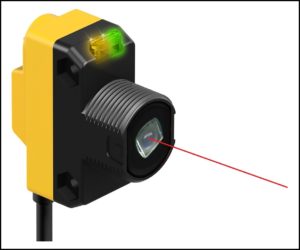
Designed custom dual beam, dual gate laser timing system for a sprint runway. Each gate had 85 cm and 115 cm simultaneous dual beam configuration located at 5 m and 10 m. The system used Banner Engineering model #QS186LE laser emitters and model #QS18 receivers. A circuit was designed to interface with a National Instruments PCIe-6323 data acquisition board running a LabVIEW interface. The system receivers had 0.75 ms response time and signals from the four receivers were sampled at 1000 Hz.
Photonics Components
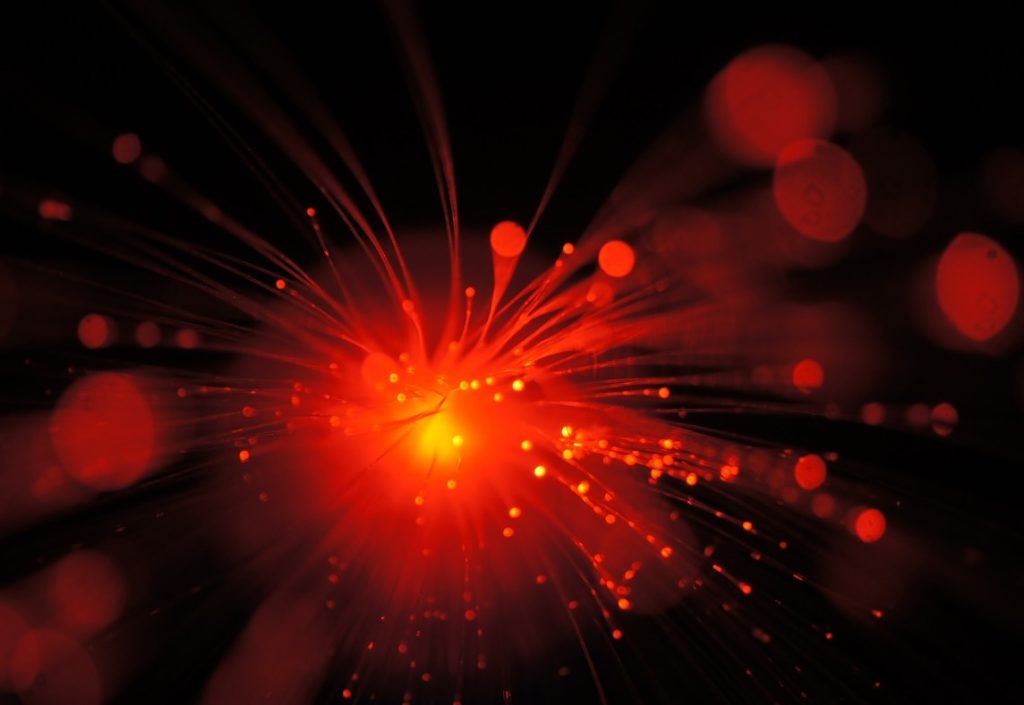
Laser Systems
– Control system for SDL/JDS Uniphase tunable 1083 nm laser diode in TO-3 package
– Photonic Packaging Technologies development of butterfly package for laser die, thermoelectric cooler, thermistor, and fiber-optic interface
– Tunable DBR lasers manufactured by FBH/Ferdinand-Braun-Institut
– Koheras development of custom tunable fiber-laser system utilizing both piezoelectric tuning and thermal tuning of wavelength
– Gas laser systems – Helium-Neon (632.8 nm), Argon Ion (454.6 nm), Carbon Dioxide (10.6 um), Nitrogen (337.1 nm)
– Marlow and Melcor thermoelectric coolers for laser package designs
– Test equipment utilizing multiple bar-code laser scanners and laser marking systems
– Banner Engineering model #QS186LE laser emitters and model #QS18 receivers
Fiber Optics
– Koheras IR fiber-laser systems
– Panda and Bow-tie polarization maintaining fibers
– Optomechanical fiber interfaces for laser diodes
– Automated equipment for assembly and laser attenuation testing of Siecor ST fiber-optic connectors
– Combustion monitors which incorporated fiber-optic systems utilizing high temperature lens assemblies and Fiberguide bundles.
Free-Space Optics
– Lenses, filters, polarizers, diffraction gratings, beamsplitters, and polarizing-beamsplitter-cubes
– Newport and Melles Griot Bandpass Filters for UV, VIS, and NIR
– Miniature high-temperature lens assemblies for combustion probes
Optical Sensors
– Low-level photon detection systems using Hamamatsu R595 electron multiplier and Spiraltron electron multiplier SEM 4219
– Si, Ge, InGaAs, PbS detectors and photomultiplier tubes
– NEP PbS sensors with extended UV/VIS range
– Hamamatsu UVTRON photoelectric detector
– Allen-Bradley/Rockwell Automation and DVT/Cognex machine vision systems for parts inspection and automation control systems
– Banner Engineering through-beam, reflective, convergent, and color sensing optical sensors
– VIS/IR motion capture sensors and systems
Spectroscopic Instrumentation
– McPherson 235 Seya-Namioka Monochromator / Spiraltron Electron Multiplier SEM 4219
– Princeton Instruments Acton VM-502 / Hamamatsu R595 Electron Multiplier / Varian Ion Pump
– Jarrell-Ash 82-410 0.25 Meter Ebert Monochromator / Princeton Applied Research Optical Multichannel Analyzer OMA-1205
– Oriel 77250 Series 1/8 m Monochromator / Hamamatsu UV-Enhanced Si
– Anritsu Optical Spectrum Analyzers